Conjuring Matthew Henson: African-American Polar Explorer
9 June 2020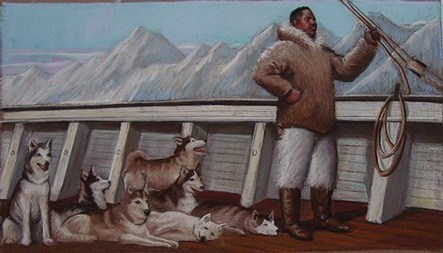
By Carole Boston Weatherford
When I was growing up in Baltimore, my father taught at Frederick Douglass High School, his alma mater and for years one of only two local high schools that admitted blacks. Among the school’s former faculty was Herbert M. Frisby (1888-1983), a biology teacher, historian and advocate for the African-American community. Frisby was studying at Howard University in 1909 when Henson reached the North Pole. Awed and inspired, Frisby vowed to follow in Henson’s footsteps.
Frisby spent five years searching for his hero’s birthplace in southern Maryland and carried a piece of wood from the cabin to Henson in New York, sparking a lasting friendship. As a correspondent in Alaska and the Aleutian Islands for the Afro-American Newspaper during World War II, Frisby wrote of encounters with the Inuit people. He later mounted a one-man crusade to get Henson recognized as co-discoverer of the North Pole—credit long denied due to the color of his skin. Frisby’s efforts on his idol’s behalf led to a Baltimore elementary school being named for Henson and the placement of a memorial plaque commemorating Henson in the Maryland State House.
Frisby himself made 26 trips to the polar regions, spent two months living in an igloo with an Inuit family, and flew over the pole, dropping a steel box containing an American flag and bronze plaque honoring Henson. Frisby curated a museum in his home with artifacts from his arctic travels. Through my father’s connection to Mr. Frisby, I first learned about Matthew Henson.
Years later, I visited the state house to see Henson’s plaque. I was working on my first poetry collection, Remember the Bridge: Poems of a People. That book included a poem celebrating African-American exploration, from Estevanico’s quest for the legendary Seven Cities of Gold to astronaut Mae Jemison’s voyage into outer space. The poem also hailed Henson. Like a few other subjects who made cameos in my earlier books, Henson would eventually get a book of his own.
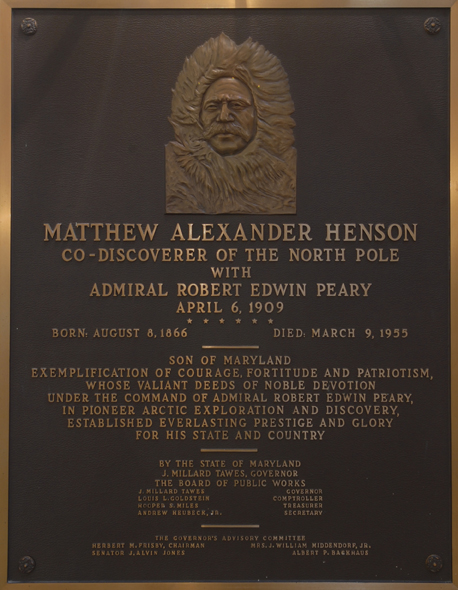
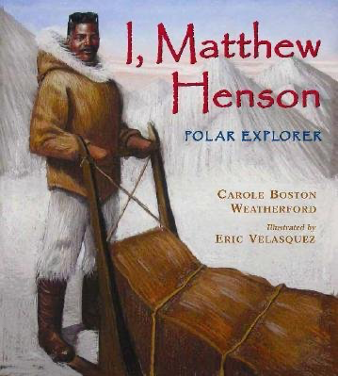
My children’s picture book, I, Matthew Henson: Polar Explorer is a biography in verse and my third collaboration with illustrator Eric Velasquez. Told in first person, Henson’s remarkable life story unfolds through poetic vignettes—each introduced by a negative statement conveying his resolve to rise above the ordinary even in the face of adversity.
I had not stuck by Peary for decades,
Sharing the same goal, only to reach a fork
When our journey was on its last leg.
To achieve their shared goal, Henson battled both racism and the harsh polar climate.
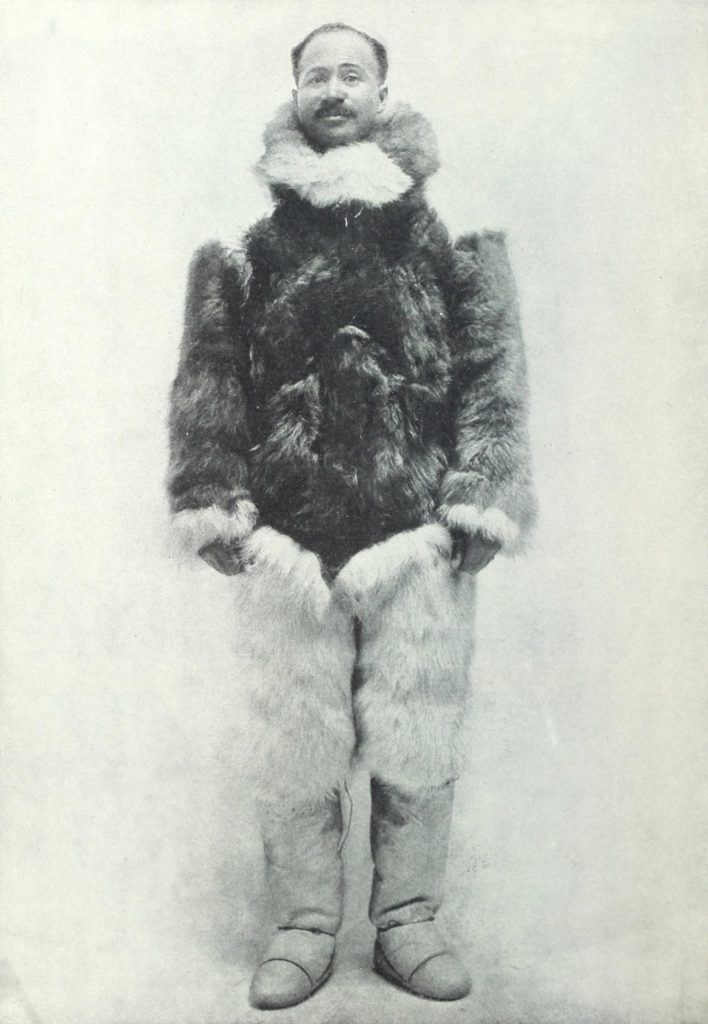
Image from Walter H. Page’s 1909 ‘The World’s Work’ (p. 12826) 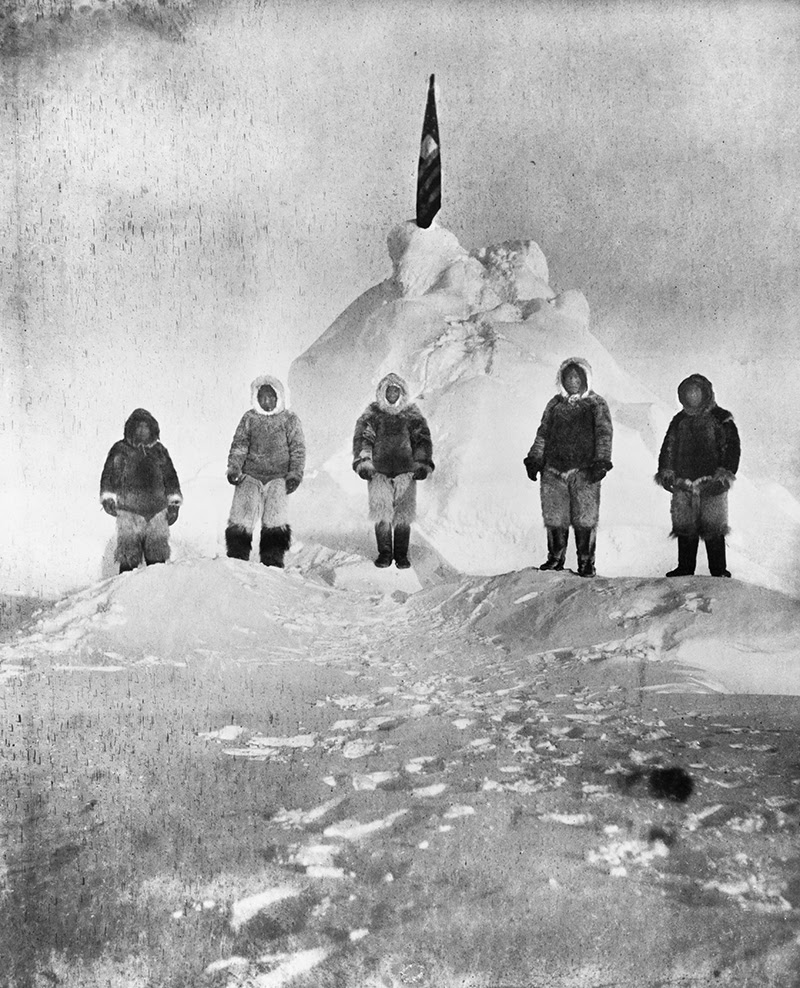
Henson and four Inuit guides © Robert E. Peary
In researching I, Matthew Henson, I noted the bond between Henson and the Inuit people. He learned their language and joined with them for songs around the campfire. But he did not believe their superstitions.
Young readers, though, are spellbound, by the specter of an evil spirit.
I did not befriend the Inuit, learn
to build a sledge, handle a dog team,
track and hunt on ice, and kill a polar bear
to let an Eskimo legend freeze me with fear.
“Kokoyah, the Devil of the North, guards
the ice cap,” the Inuit warned.
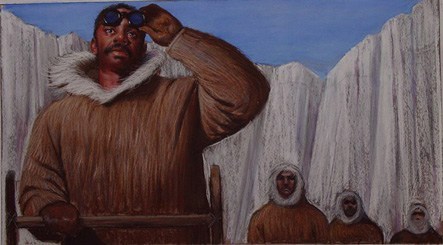
Bad luck—from ice floes and food shortages to frostbite—dogged Henson and Peary. But they prevailed. As they pose at the pole, Henson notes:
A photo froze our feat in time.
But we had not come for photos. We came
to plant our flag. And Kokoyah was nowhere in sight.
Missing from this biography is the fact that Henson and Peary both fathered children with Inuit women. That chapter is for mature audiences!
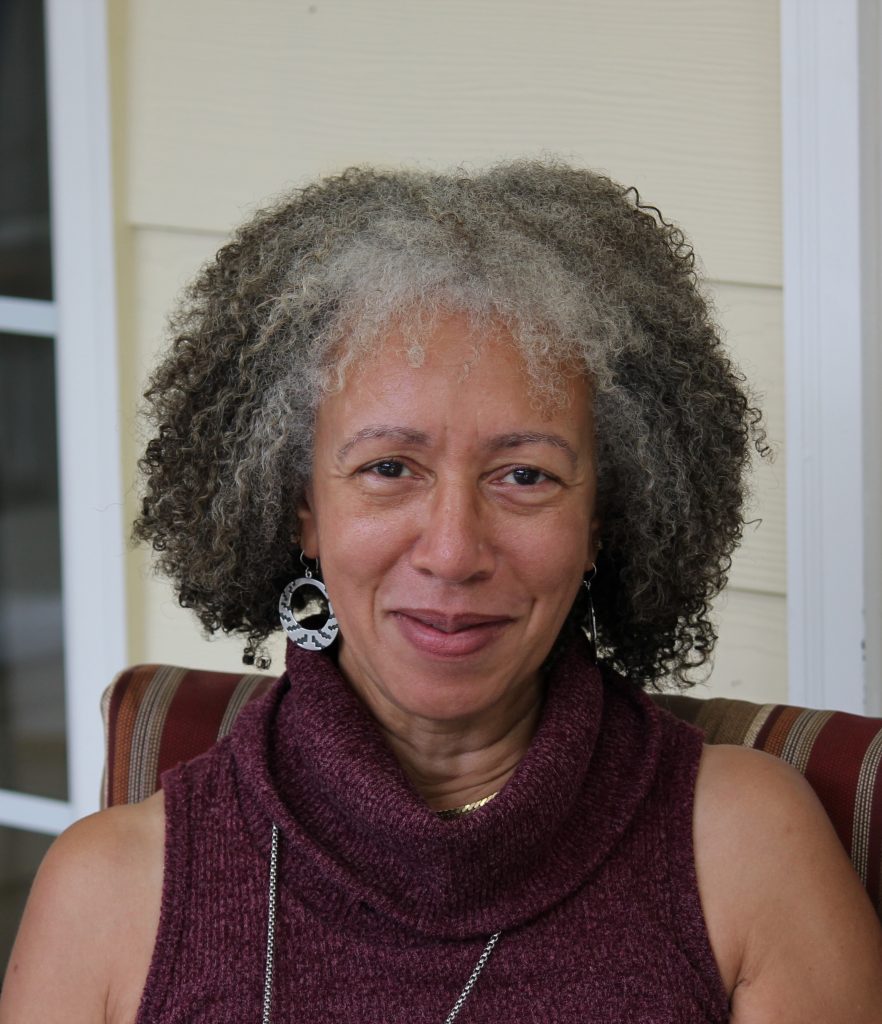
Carole Boston Weatherford is the author of more than 50 books for young people. She teaches at Fayetteville State University in North Carolina. Her latest release is BOX: Henry Brown Mails Himself to Freedom, illustrated by Michele Wood. Follow Carole at cbweatherford.com, carole.weatherford on Facebook and @poetweatherford on Twitter.
- From the Floe Edge: Visualising Sea Ice in Kinngait, Nunavut
- Bridging Knowledge and Action: A Polish-Norwegian Perspective on Arctic Science-Policy Collaboration
- Unpacking the Motivation Behind Wintering at Polar Stations
- Working the Ocean’s White Gold: A Nutshell History of a Living Bering Strait Tradition
- Political Participation in the Arctic: Who is heard, when, and how?